Nikon Z6 Af During Continuous Shooting
Autofocus Performance
Even though the Nikon Z6 has a new 273-point autofocus system, it still shares a lot of focusing DNA with Nikon's DSLR lineup. Nikon DSLRs, especially the newest models, are known for their high-quality phase-detect autofocus systems when shooting via the viewfinder. But that reputation doesn't carry over to live view autofocus performance, which, even on Nikon's best DSLRs is quite slow.
Although the Z6's autofocus does draw inspiration from Nikon's traditional viewfinder autofocus as well, it definitely is closer to that of Nikon's live view focusing system. The good news is that the addition of on-sensor phase-detect pixels lets the Z6 focus quite quickly, and other features like Low-Light AF are better than Nikon's previous live view attempts. If you are using AF-S mode for single-servo autofocus, the Z6 has an amazing autofocus system that will not disappoint (as explained more in a moment).
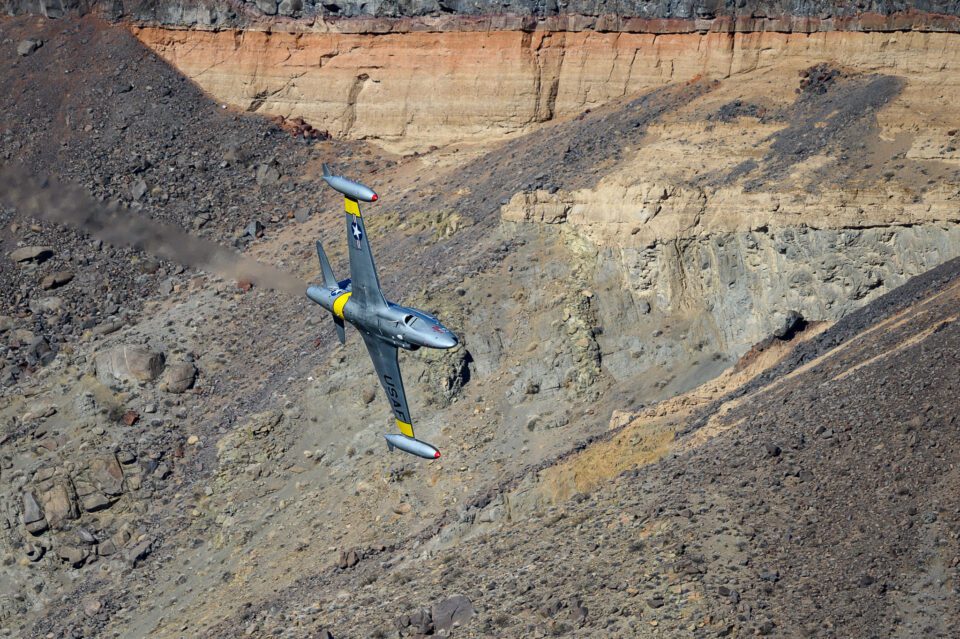
Although one could argue that the autofocus system on the Nikon Z6 is somewhat inferior in AF speed and accuracy to Nikon's proven 51-point phase-detection AF found on the Nikon D750 and D780 cameras, some of the AF features of the Z6 are game-changing for Nikon.
With Nikon adding automatic eye and animal detection autofocus features into the firmware (more on this below), the Nikon Z6 now stands out from all DSLRs in its ability to continuously track subject eyes, something no Nikon DSLR has been previously able to do. Eye detection features are great in the field because they allow photographers to actively engage with their subject while letting the camera do its job with keeping the subject continuously in focus.
Nikon has also completely changed the way subject-tracking AF works on the Z6 with firmware 3.00. Once updated, it is now possible to configure one of the function buttons to engage the subject-tracking mode with a single press of a button. Holding the AF-ON (or whichever button is programmed to focus) will lock on the subject and actively track it.
Let's take a quick look at the comparison of all AF mode options on the Nikon D750 and Z6:
| AF Area Mode | Nikon D750 | Nikon Z6 |
|---|---|---|
| Pinpoint | No | Yes |
| Single Point | Yes | Yes |
| 9-Point Dynamic Area | Yes | Yes |
| 21-Point Dynamic Area | Yes | No |
| 51-Point Dynamic Area | Yes | No |
| Wide-Area AF | Yes, one size (and live view only) | Yes, both L and S sizes |
| Auto-Area AF | Yes | Yes |
| Group-Area AF | Yes | No |
| 3D Tracking | Yes | Yes, in Auto Area AF |
| Eye AF | No | Yes, Firmware > 2.00 |
| Animal Eye AF | No | Yes, Firmware > 3.00 |
As you can see, while the Nikon D750 has more complex autofocus tracking algorithms, including Group Area AF, the Nikon Z6 is capable of performing Eye and Animal Detection autofocus, which the D750 cannot do, even when shooting in live view mode. The newer Nikon D780 inherits the Eye AF functionality from the Z6, but it does not have Animal Detect AF.
Ergonomics
The Nikon Z6 doesn't have a dedicated button to change autofocus settings. This is a departure from Nikon's classic design choice, to have an AF-M switch on the front of the camera with an autofocus button inside. In its place, Nikon expects you to use the quick menu – accessed via the "i" button – to change focusing settings, or otherwise assign a custom button for that purpose.
Personally, I've chosen to assign my movie record button to change autofocus settings, and it's not a bad solution. Press the button and spin one dial to change between AF-S, AF-C, and MF. Spinning the other dial changes autofocus area modes: Auto Area, 9-Point Dynamic Area, Wide Area, Pinpoint (only in AF-S), and so on. Note that the Z6 does not have an AF-A mode to switch automatically between AF-S and AF-C, which is not a big deal for most of this camera's users, but nonetheless matters to some photographers.
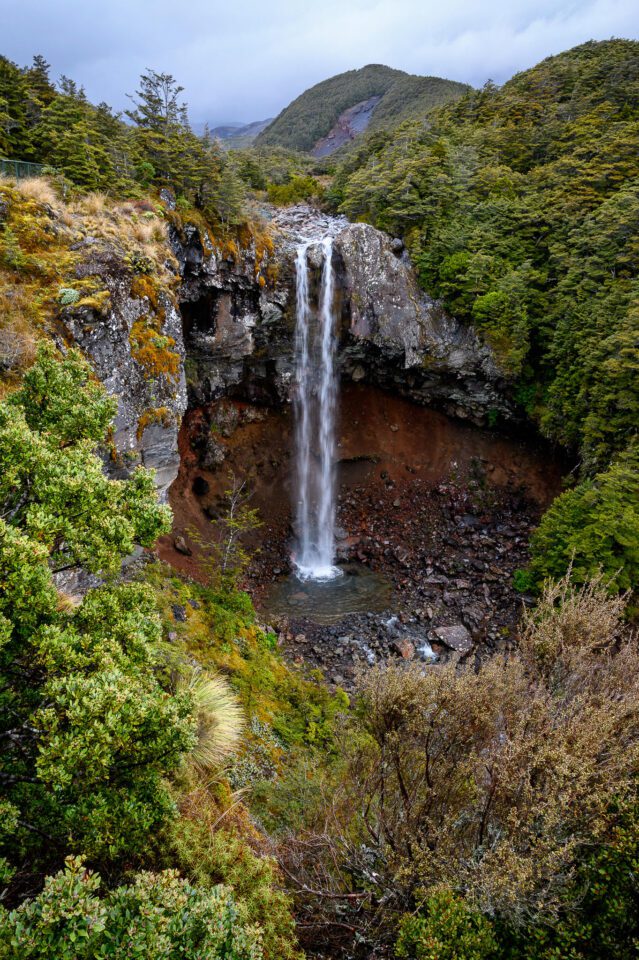
Once you assign autofocus settings to a good custom button, you'll find that the Z6 works in much the same way as other Nikon cameras. Of course, that does prevent you from using the button for a different custom function, which isn't ideal. As mentioned earlier, this takes away a spot to assign something like metering or bracketing. Still, if you change autofocus settings frequently, assigning a custom button is much better than entering the "i" menu all the time.
Lastly, note that you cannot use the Z6's LCD touchscreen to control your autofocus point while looking through the viewfinder. Other mirrorless cameras have this capability, and some photographers have noted it to be a useful part of their shooting styles. Personally, I prefer the joystick instead, and I wouldn't use the touchscreen for this purpose even if it were available. But if this is a feature you think you would use, just keep in mind that the Z6 doesn't have it – at least at the moment. A firmware update could conceivably add this capability.
AF-S Performance (Static Subjects)
The Z6's autofocus is superb for static subjects, focusing quickly and accurately, including in low-light conditions. You'll still want to find a subject with good texture, though, not just a single sharp line or soft transition. And, as covered more in a moment, you get the best performance using native Z lenses rather than F-mount lenses via the FTZ adapter.
With the native Z mount lenses, the Nikon Z6's AF-S (single servo autofocus) is simply excellent and very accurate. In fact, when compared to DSLR performance with prime lenses, the focusing performance of the Z6 is superior for a number of reasons. First of all, unlike DSLR cameras that have a separate phase-detection autofocus system that does not always match the lens, mirrorless cameras focus right on the sensor plane. This basically eliminates focus variances between the camera body and the lens and removes the need for fine-tuning lenses.
Second, unlike DSLR cameras that require lenses to always focus at their widest apertures (to keep the viewfinder bright and to allow maximum light to reach the phase-detection system), which results in focus shift issues, the Nikon Z6 stops the lens down to the exact aperture before it focuses, which pretty much eliminates focus shift. Note that the Z6 only stops down to focus from maximum aperture to f/5.6. When using smaller apertures like f/8-f/22, the camera keeps the lens locked at large enough aperture to pass sufficient light to the sensor, then stops the lens down to the desired aperture right before the image is captured. This is a very smart way of mitigating the focus shift on the Z6, which drastically reduces focusing issues.
Lastly, I found the Nikon Z6 to focus extremely accurately on a high-contrast test target when using Imatest software – enough so that it matched our best possible manual focus efforts in nearly every case. This is a big deal when testing lenses; the Z6 is pretty much "dead on" every single time.
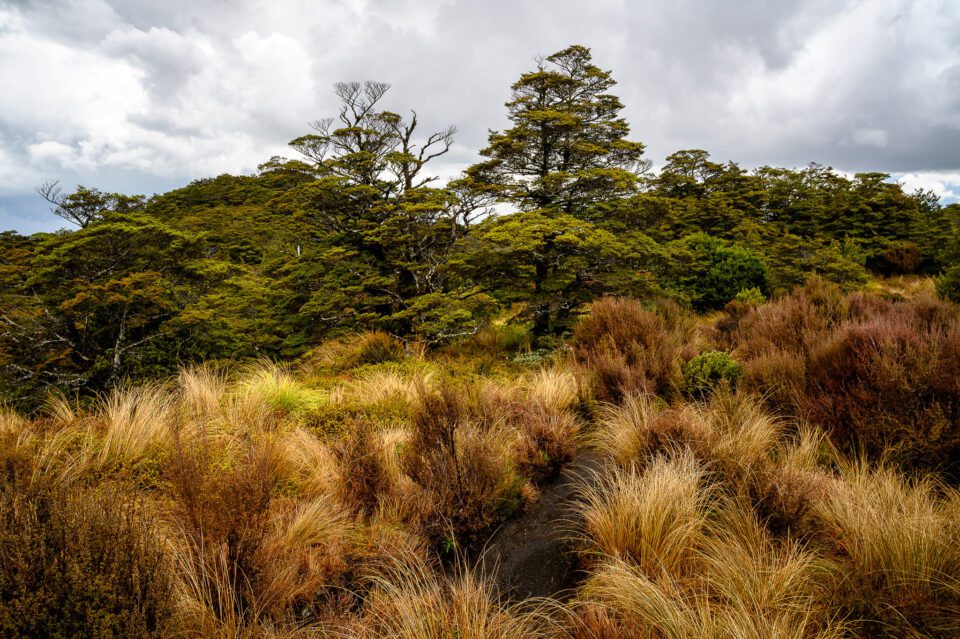
Overall, autofocus speed and accuracy are quite impressive, with practically no hunting for focus at all under most conditions. You have several autofocus area modes to choose from for AF-S, including a "Pinpoint" area mode previously found on the D850 in live view. This is a great way to set an extremely small focusing box to lock onto a very precise subject. It takes a bit more time to autofocus when you use this method, so I personally prefer the slightly larger area mode by default, but this is a nice way to make sure that you are targeting your exact subject – for example, the center of a flower rather than its petals.

Face / Eye AF and Animal Detection AF
Since the Nikon Z6 announcement, Nikon has updated the camera firmware a number of times. Since firmware 2.0, a new feature many Nikon shooters asked for became available: Eye Autofocus. Although it is Nikon's first attempt at this feature, it works quite well for tracking the eyes of a subject at moderate distances.
In addition to Eye AF, Nikon has also introduced "Animal Detection" AF mode for tracking animals. When using the Area AF mode, Animal Detection AF automatically detects animals like dogs and cats, figures out where the nearest eye is, then it focuses on it. I found this feature to work really well for photographing my cats, who are always on the move.
Here is a video that details how Face / Eye AF and Animal Detection AF work on the Nikon Z6, as well as its low-light autofocus in indoor conditions:
So far, our assessment of Eye AF is quite positive. However, when shooting at close distances and when shooting tight headshots with telephoto lenses, the Eye AF algorithm seems to occasionally focus on the subject's eyelashes instead of the eyes. Another problem is that when the subject is farther away, the Eye AF does not get activated until the subject gets close enough to the camera, as we have demonstrated in the above video.
When multiple subjects are in the frame, the camera allows switching between all the detected eyes of subjects. In addition, there is now no need to press the OK button to engage focus tracking (although area locking still works with the OK button). The Face Detection menu in "Custom Setting Menu" -> "Autofocus" now displays "Auto-area AF face/eye detection", with "Face and eye detection on" by default. With the latest firmware 3.0, you will also be able to see the new "Animal detection" menu option:
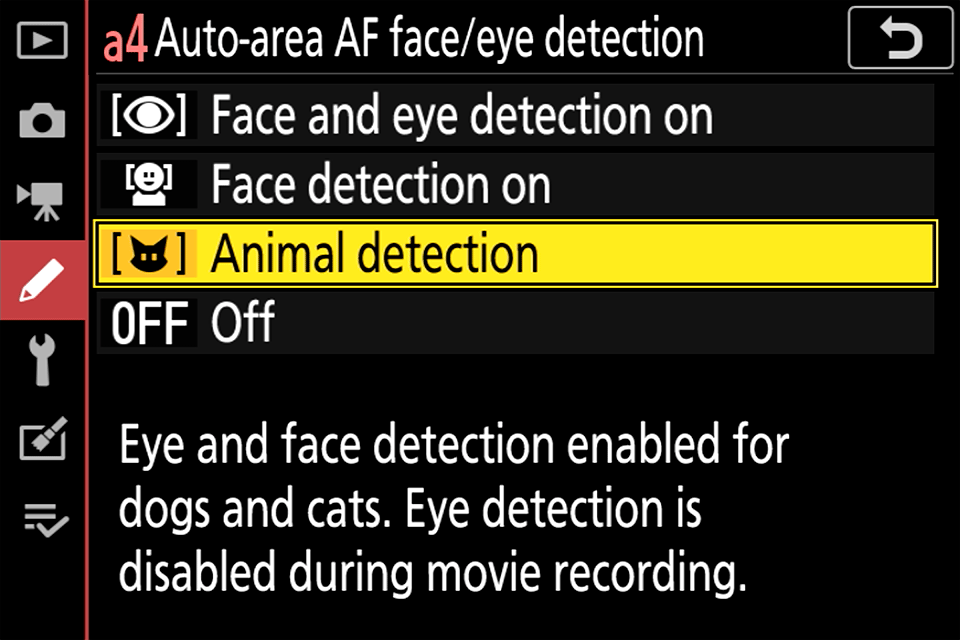
Here is a test case scenario, where I photographed my daughter with the Nikon Z 50mm f/1.8 S lens at a fairly close distance:
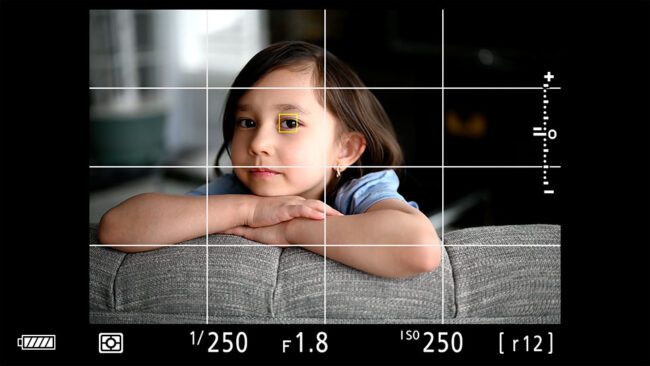
Here is the resulting image:
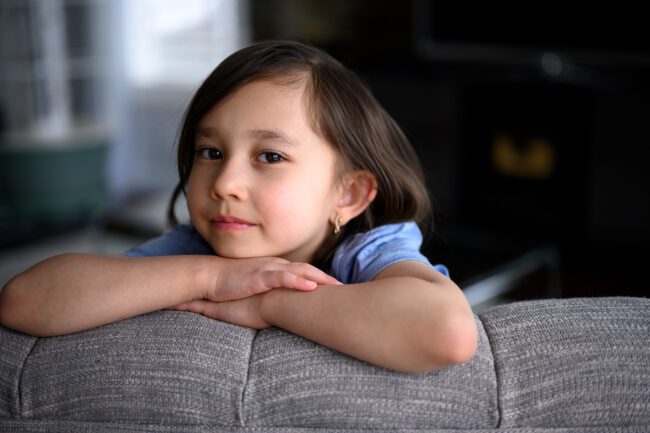
And here is a 100% crop of the above image:

As you can see, the camera did well when focusing on her left eye in this case. This is the best-case scenario – other shots taken at different distances and angles showed slight inaccuracies in Eye AF precision, especially when the subject was constantly moving, which is normal.
Overall, the Nikon Z6 is excellent for stationary subjects. Especially if you already prefer shooting in live view, you will find the Z6's AF-S to beat most other options on the market. It's fast and accurate, and it has enough options to make autofocus easy even in tricky conditions.
AF-C Performance (Moving Subjects)
Although the Z6 does a great job at single-servo autofocus, continuous autofocus is more of a mixed bag. That's especially true when you try to track your subject across the frame. Although it does a better job locking onto and following your subject than Nikon DSLRs in live view, it can sometimes miss focus in a series of AF-C images. Note that it is hardly the worst tracking performance for a mirrorless camera, and you definitely can get good photos shooting AF-C, but it still seems to lag behind Nikon DSLRs.
That's especially true in dark conditions since the low-light AF doesn't engage in AF-C mode (and even if it did, it wouldn't be nearly fast enough to keep up with a moving subject). You'll need to switch back to AF-S if you want any chance of the camera locking on in dark environments.
Previous Nikon users might find another thing odd: In AF-C mode, the red box that indicates proper focus never turns green, even when the photo is completely sharp. Instead, it stays red and unchanging the entire time, unless the Z6 has completely failed to find focus, at which point the box starts blinking. Although this isn't unworkable behavior, it's a bit disconcerting if you've internalized that red means out of focus and green means tack-sharp.
With the firmware v3.00, the Nikon Z6 can be set up to initiate subject tracking via one of the function buttons on the camera, or on a lens (if it has one). Once that's done, you have to make sure to switch to Auto Area AF mode in order to be able to use it. Pressing the function button will switch to subject tracking mode – all you have to do from there is press the AF-ON button (or whichever button is set up to focus) to start tracking the subject. To stop tracking or change the subject, you simply let go of the focus, which resets the box to the center of the frame.
Overall, we are happy to see Nikon introduce so many important changes to the autofocus capabilities of the Z6. While the autofocus system has not yet caught up with Nikon's top-of-the-line DSLRs, it is just a matter of time until it does.
Low-Light AF
The new "low light AF" feature on the Z6 uses longer shutter speeds to gather more light, creating a brighter image preview in order to help the autofocus system lock on in dark environments. The downside is that it can take quite a bit of time to focus when using the low-light AF feature, and the image preview becomes quite laggy as a result of the longer shutter speeds. To me, those downsides don't matter too much, because the low-light AF feature lets the Z6 shoot in much darker conditions than would otherwise be possible.
The Z6 focuses best on high-texture areas, so make sure to find subjects with as much contrast as possible when you want to use this feature. If you find a good subject, you'll be able to use the Z6 in remarkably dark conditions to lock focus precisely. I took the photo below in very low light environment and the camera was able to autofocus on the rocks without any issues:
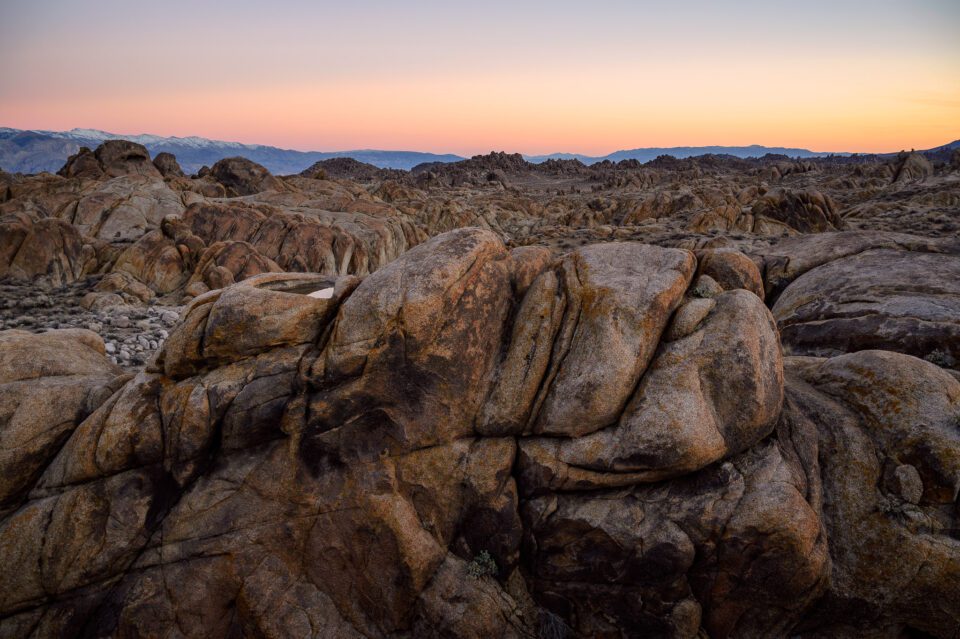
In fact, I like the brighter preview so much that I wish you could use it while focusing manually, particularly for something like Milky Way photography. As good as the Z6's low-light AF can be, it still won't autofocus on a star in the dark of night. That's no surprise, of course; I wouldn't expect such insane performance, even though the Fuji X-T3 somehow manages to make it work. But I would love to have the brighter preview available for manual focus work since it's not easy to pinpoint a star at night based on the normal LCD image. This, too, could be added with a firmware update, and it would be a very welcome sight.
Adapted Lenses via FTZ
When adapting F-mount lenses onto the Z6 via the FTZ adapter, focus performance noticeably declines. For one, low-light AF doesn't work as well, so you're confined to brighter shooting conditions. You'll also find that the Z6 gives up focus more quickly in general, regardless of lighting conditions. You need to be more careful about your subject and find something with as much contrast as possible. Accuracy stays quite high when it does lock on, though.
It's not actively bad, and it certainly succeeds more than it fails, but at the same time, you can tell that the Z6 was made for native lenses. Even the speed of focusing is slower with the FTZ adapter compared to the fly-by-wire system in Z lenses. That wouldn't be as big of a problem if more Z lenses were available, but at the moment the selection is quite limited. So, if you're eager to make the Z6 your main camera system, you better be willing to accept the somewhat worse focusing performance with the FTZ adapter.
Again, I'll emphasize that these issues are not going to ruin your day-to-day photography. The autofocus performance from the FTZ adapter is not vastly worse; it's just a step-down. You can still get plenty of good photos from adapted lenses, generally without focusing issues at all. But if you tend to push against the boundaries of the Z6's focus system anyway, you'll run into them sooner when you adapt a lens.
Is the Z7's Autofocus Good Enough?
Let's say you're a D850 shooter, and a group of Nikon engineers offers to build you a better version of live view autofocus. It's noticeably faster, offers eye autofocus, adds some extra tracking options, and works in lower light than before. But these improvements come at a cost: the only way to implement the new version of live view is to scrap the old, highly praised viewfinder autofocus system. For better or worse, both in live view and the viewfinder, you're stuck with the new focusing system. Would you make the swap? Because that's about where the Z6 is.
It's not a scenario that many photographers would openly embrace, although I'll caution that it's not as bad as you might think. After-all, a significant number of landscape and architectural photographers are using live view for most photos anyway. With this change, your live view autofocus system is more responsive overall, and it works better in low-light conditions. Perhaps that's more important to you than the advantages of the old viewfinder autofocus system. Similarly, video shooters should welcome better tracking for moving subjects, improving the camera's usability by a significant degree.
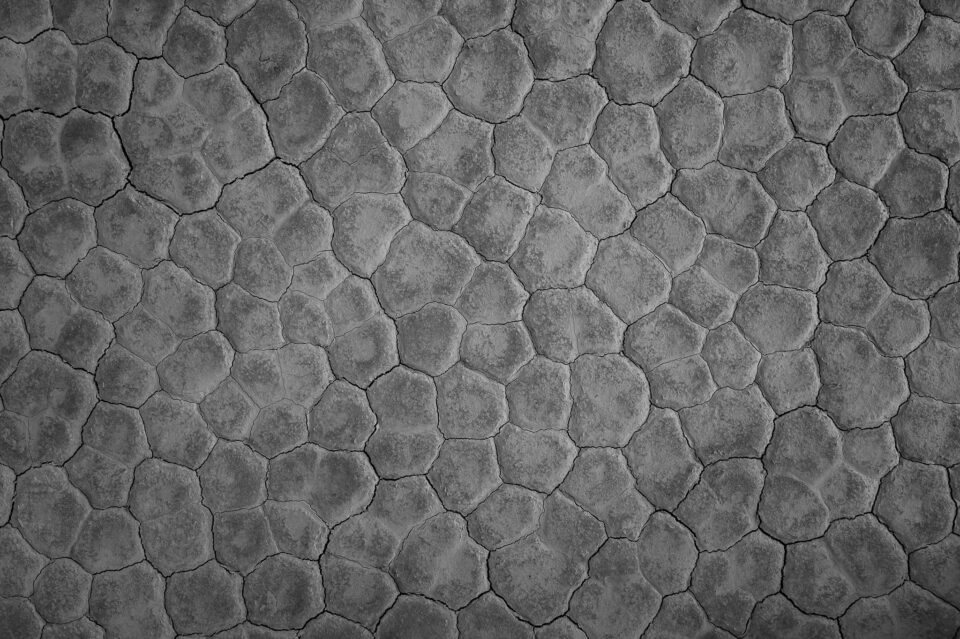
Portrait, travel and pet photographers will most likely happily embrace the new Eye and Animal Detection autofocus features that have been rolled out via firmware. The ability to track subjects' eyes is an important one – the camera automatically finds the subject and often does a decent job with accurately focusing on the subject's face or their eyes. While eye autofocus has not yet reached extremely high accuracy levels with the latest firmware, it works reasonably well – arguably better and faster than manually moving the focus point in Single-Point AF.
It's really the sports and wildlife photographers who should be cautious about moving to Nikon's mirrorless system. Nikon's 153-point phase-detection system on cameras like the Nikon D500 is excellent. Aside from the AF system on top-of-the-line cameras like Nikon D6 and Canon 1D X Mark III, it is one of the best autofocus systems on the market today for tracking fast action. So if that's mostly what you do, you might want to hang on to your DSLR and wait until Nikon's mirrorless AF system fully catches up. Plus, there are no super-telephoto lenses for the Nikon Z at the moment anyway…
Considering all the latest firmware improvements, the Nikon Z6 has clearly stepped up its autofocus performance in a number of ways. The introduction of eye and animal detection modes is clearly an indication of Nikon's commitment to its mirrorless cameras, and we expect the company to continue tweaking these modes to make them faster and more accurate in the future.
Shooting Speed (FPS) and Buffer
The Nikon Z6 is capable of shooting at up to 12 frames per second, which is pretty impressive for any camera today. Each 14-bit lossless compressed RAW file is around 28.2 megabytes – that's a lot of data to process. Unfortunately, though, the Z6 buffer doesn't do a great job keeping up with all this information. You'll only get about 43 photos at 12 FPS shooting, or roughly 3.6 seconds before the camera slows down. Here is the full chart, comparing the Z6 to the Z7, D850, D810, D800, and D750:
| DSLR | Image Type | File Size | Buffer |
|---|---|---|---|
| Nikon Z7 | NEF (RAW), Lossless compressed, 12-bit | 44.7 MB | 23 |
| Nikon Z6 | NEF (RAW), Lossless compressed, 12-bit | 22.5 MB | 35 |
| Nikon D850 | NEF (RAW), Lossless compressed, 12-bit | 41.5 MB | 170 |
| Nikon D810 | NEF (RAW), Lossless compressed, 12-bit | 31.9 MB | 47 |
| Nikon D800 / D800E | NEF (RAW), Lossless compressed, 12-bit | 32.4 MB | 21 |
| Nikon D750 | NEF (RAW), Lossless compressed, 12-bit | 21.0 MB | 25 |
| Nikon Z7 | NEF (RAW), Lossless compressed, 14-bit | 55.8 MB | 19 |
| Nikon Z6 | NEF (RAW), Lossless compressed, 14-bit | 28.2 MB | 43 |
| Nikon D850 | NEF (RAW), Lossless compressed, 14-bit | 51.5 MB | 51 |
| Nikon D810 | NEF (RAW), Lossless compressed, 14-bit | 40.7 MB | 28 |
| Nikon D800 / D800E | NEF (RAW), Lossless compressed, 14-bit | 41.3 MB | 17 |
| Nikon D750 | NEF (RAW), Lossless compressed, 14-bit | 26.9 MB | 15 |
| Nikon Z7 | NEF (RAW), Compressed, 12-bit | 40.7 MB | 23 |
| Nikon Z6 | NEF (RAW), Compressed, 12-bit | 20.4 MB | 37 |
| Nikon D850 | NEF (RAW), Compressed, 12-bit | 34.2 MB | 200 |
| Nikon D810 | NEF (RAW), Compressed, 12-bit | 29.2 MB | 58 |
| Nikon D800 / D800E | NEF (RAW), Compressed, 12-bit | 29.0 MB | 25 |
| Nikon D750 | NEF (RAW), Compressed, 12-bit | 19.2 MB | 33 |
| Nikon Z7 | NEF (RAW), Compressed, 14-bit | 49.4 MB | 19 |
| Nikon Z6 | NEF (RAW), Compressed, 14-bit | 24.8 MB | 43 |
| Nikon D850 | NEF (RAW), Compressed, 14-bit | 43.8 MB | 74 |
| Nikon D810 | NEF (RAW), Compressed, 14-bit | 36.3 MB | 35 |
| Nikon D800 / D800E | NEF (RAW), Compressed, 14-bit | 35.9 MB | 20 |
| Nikon D750 | NEF (RAW), Compressed, 14-bit | 23.9 MB | 21 |
| Nikon Z7 | NEF (RAW), Uncompressed, 12-bit | 74.1 MB | 23 |
| Nikon Z6 | NEF (RAW), Uncompressed, 12-bit | 38.5 MB | 33 |
| Nikon D850 | NEF (RAW), Uncompressed, 12-bit | 70.3 MB | 55 |
| Nikon D810 | NEF (RAW), Uncompressed, 12-bit | 55.9 MB | 34 |
| Nikon D800 / D800E | NEF (RAW), Uncompressed, 12-bit | 57.0 MB | 18 |
| Nikon D750 | NEF (RAW),Uncompressed, 12-bit | N/A | N/A |
| Nikon Z7 | NEF (RAW), Uncompressed, 14-bit | 85.1 MB | 18 |
| Nikon Z6 | NEF (RAW), Uncompressed, 14-bit | 44.1 MB | 34 |
| Nikon D850 | NEF (RAW), Uncompressed, 14-bit | 92.0 MB | 29 |
| Nikon D810 | NEF (RAW), Uncompressed, 14-bit | 73.2 MB | 23 |
| Nikon D800 / D800E | NEF (RAW), Uncompressed, 14-bit | 74.4 MB | 16 |
| Nikon D750 | NEF (RAW), Uncompressed, 14-bit | N/A | N/A |
| Nikon Z7 | JPEG Fine (Large) | 17.2 MB | 25 |
| Nikon Z6 | JPEG Fine (Large) | 9.4 MB | 44 |
| Nikon D850 | JPEG Fine (Large) | 22.0 MB | 200 |
| Nikon D810 | JPEG Fine (Large) | 18.1 MB | 100 |
| Nikon D800 / D800E | JPEG Fine (Large) | 16.3 MB | 100 |
| Nikon D750 | JPEG Fine (Large) | 12.6 MB | 100 |
As you can see, the Z6 is solid in terms of overall buffer performance, beating the Z7 and roughly matching the D810 overall (a bit better or worse depending on file type). It is ahead of the Nikon D750 and behind the Nikon D850. Note that the Z6 does not lock up completely when the buffer fills; it continues firing individual bursts that range from 4-7 photos per second apiece (with an average of five FPS). This makes the Z6 very usable for continuous shooting.
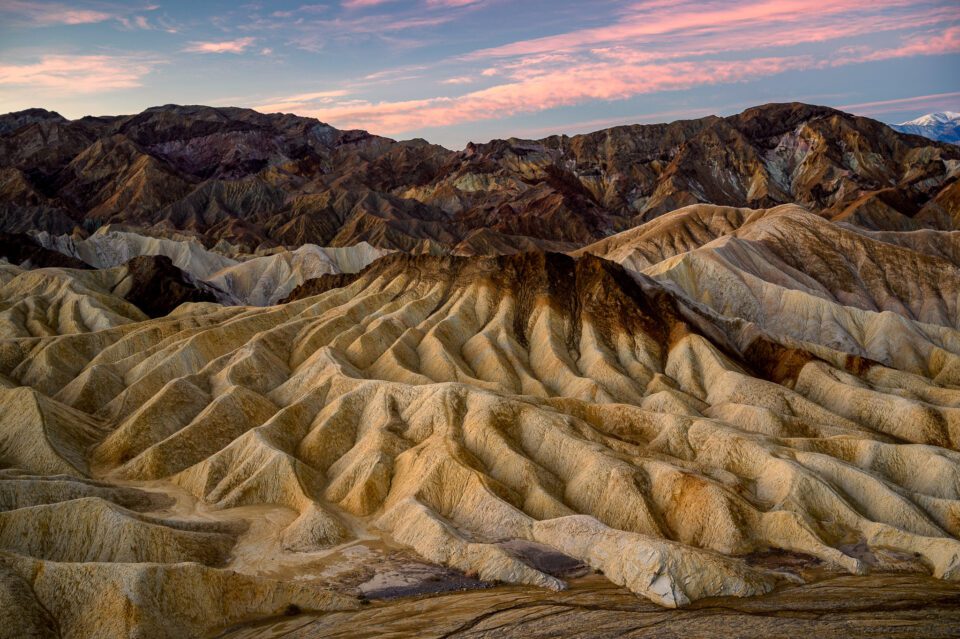
One last thing to note is viewfinder blackout. Despite earlier reports to the contrary, the Z6 does not go completely dark when you shoot at fast frame rates. Instead, at 12 FPS, you'll see a near-live preview of the scene, but with the viewfinder image only refreshed at 12 FPS. So, it's jerky, but you'll see the scene. At 9 FPS and slower, the viewfinder image will go black for a fraction of a second during individual frames, but the rest of the time will be live and quick to refresh – not too different from shooting with a DSLR when the mirror moves out of the way in mid burst. The key is that you need to turn ON "View all in continuous mode" in the Shooting/Display section of the Custom Setting Menu.
garfieldbuttephon.blogspot.com
Source: https://photographylife.com/reviews/nikon-z6/3
0 Response to "Nikon Z6 Af During Continuous Shooting"
Post a Comment